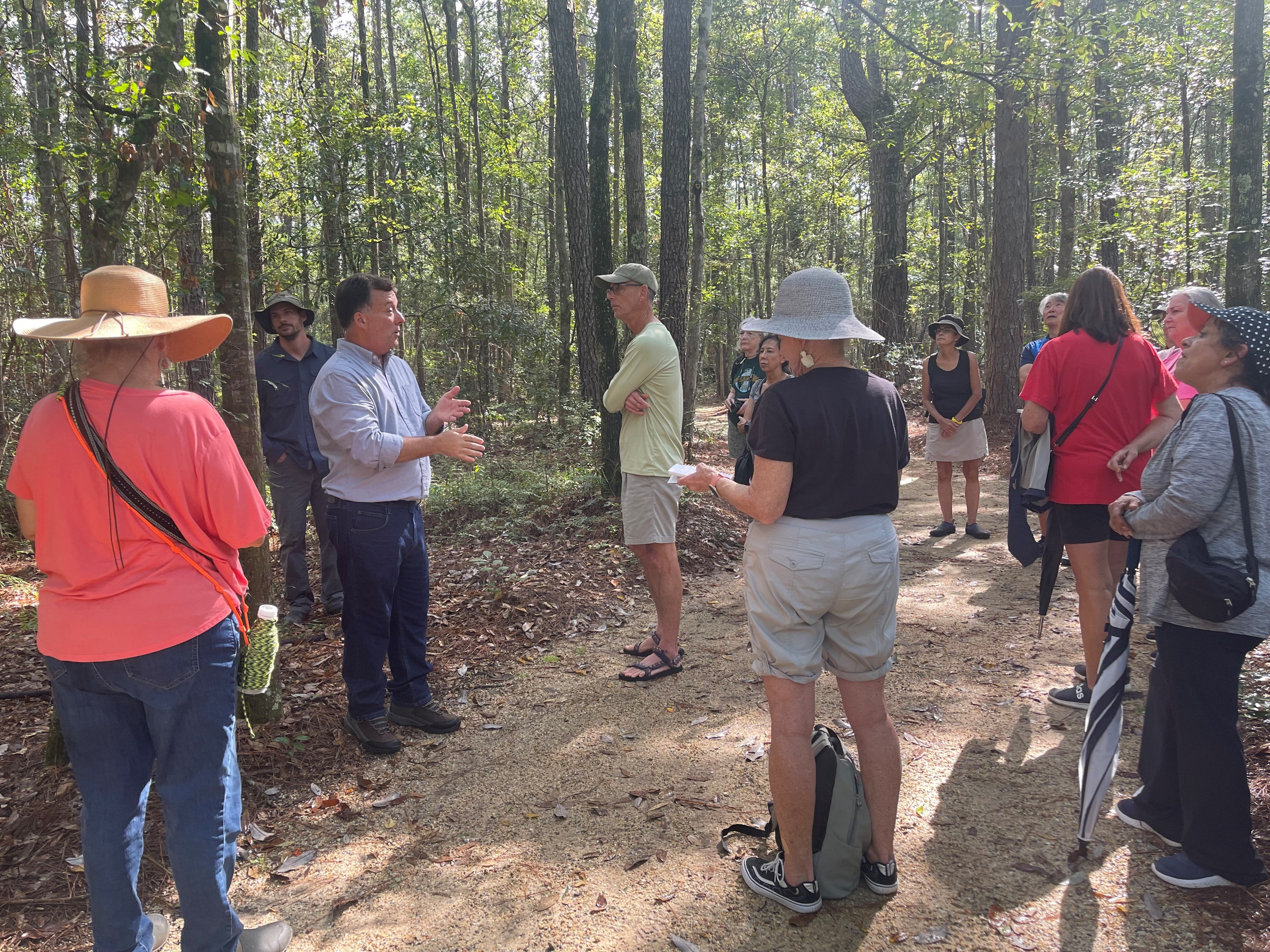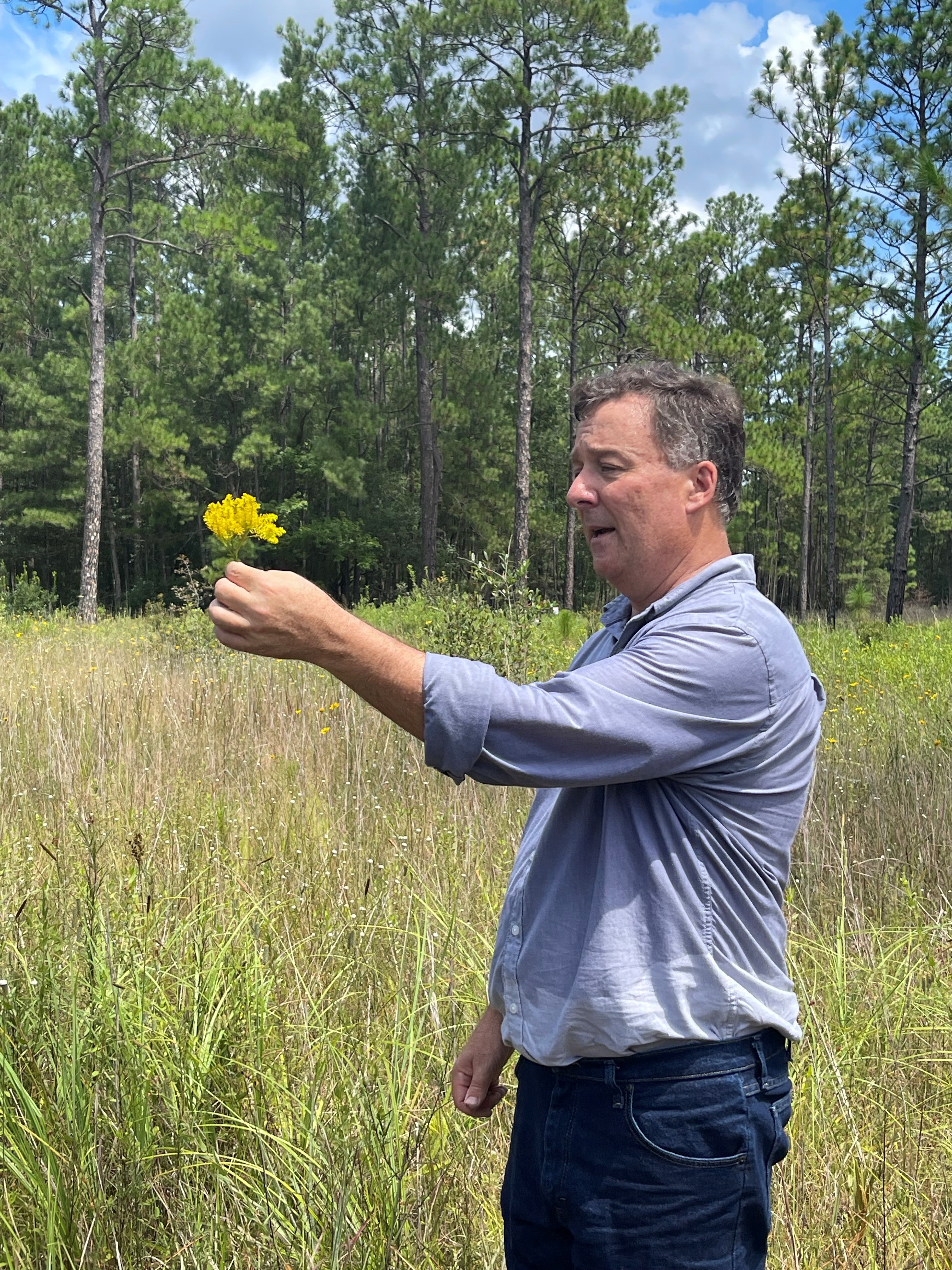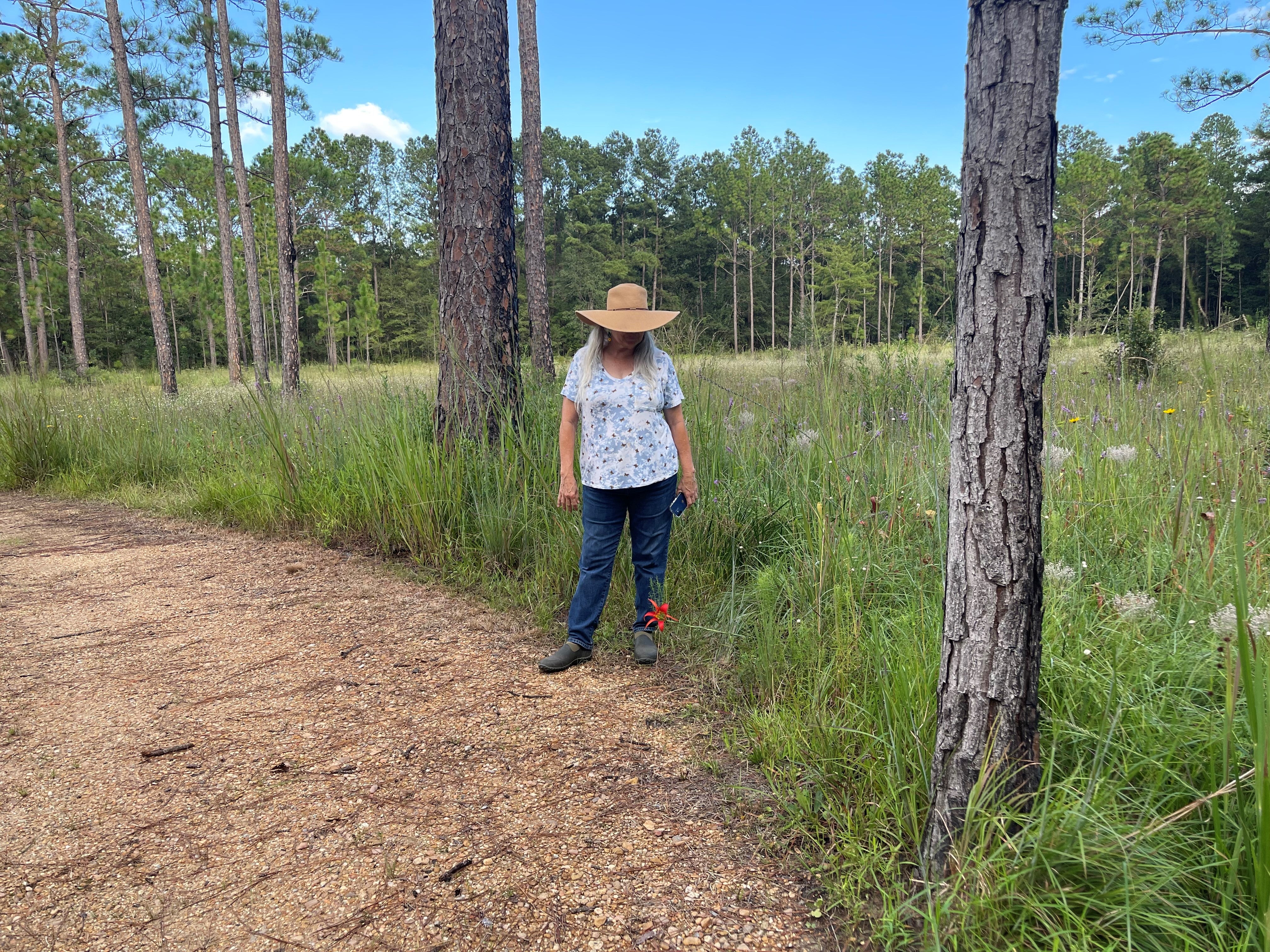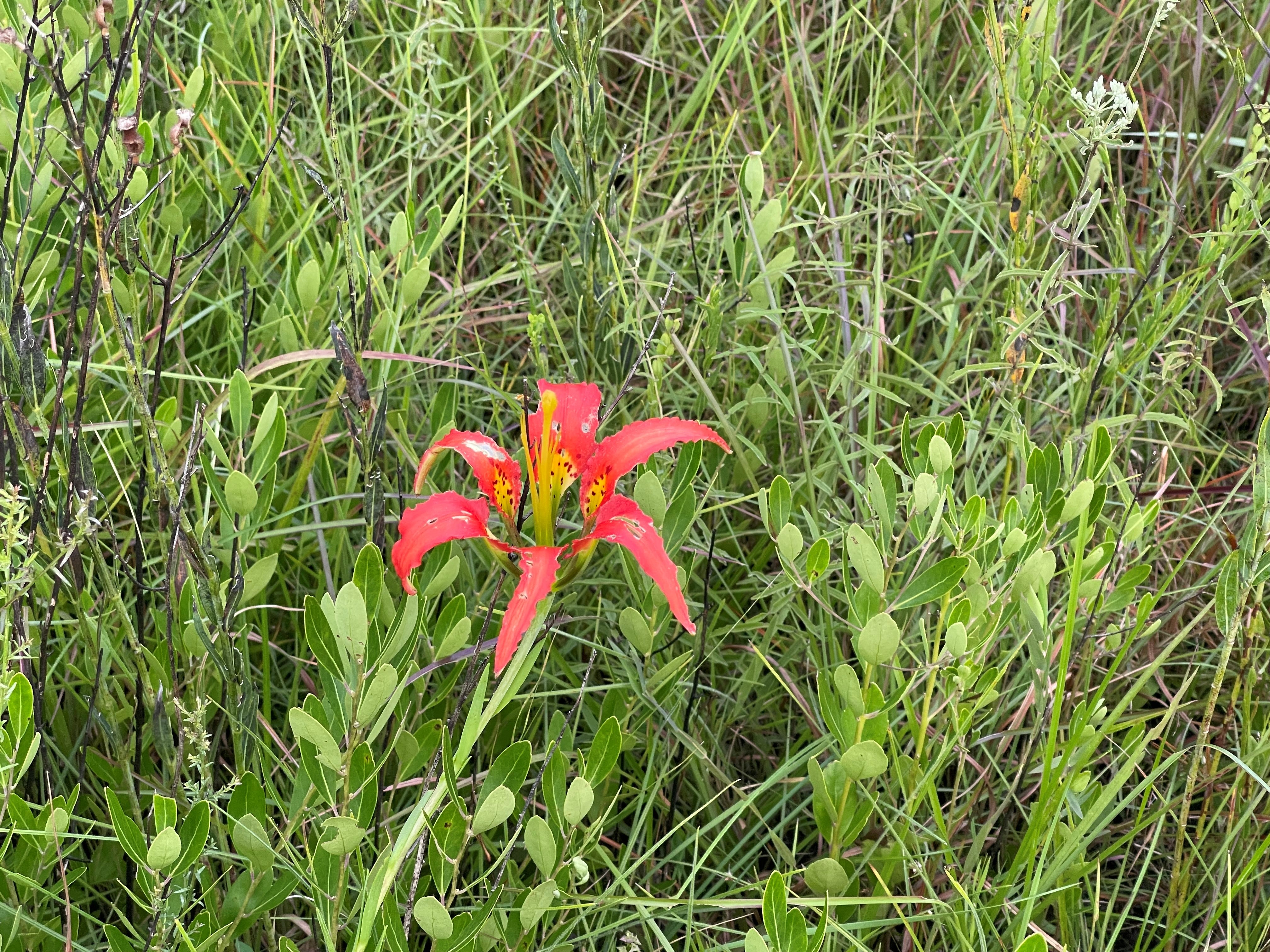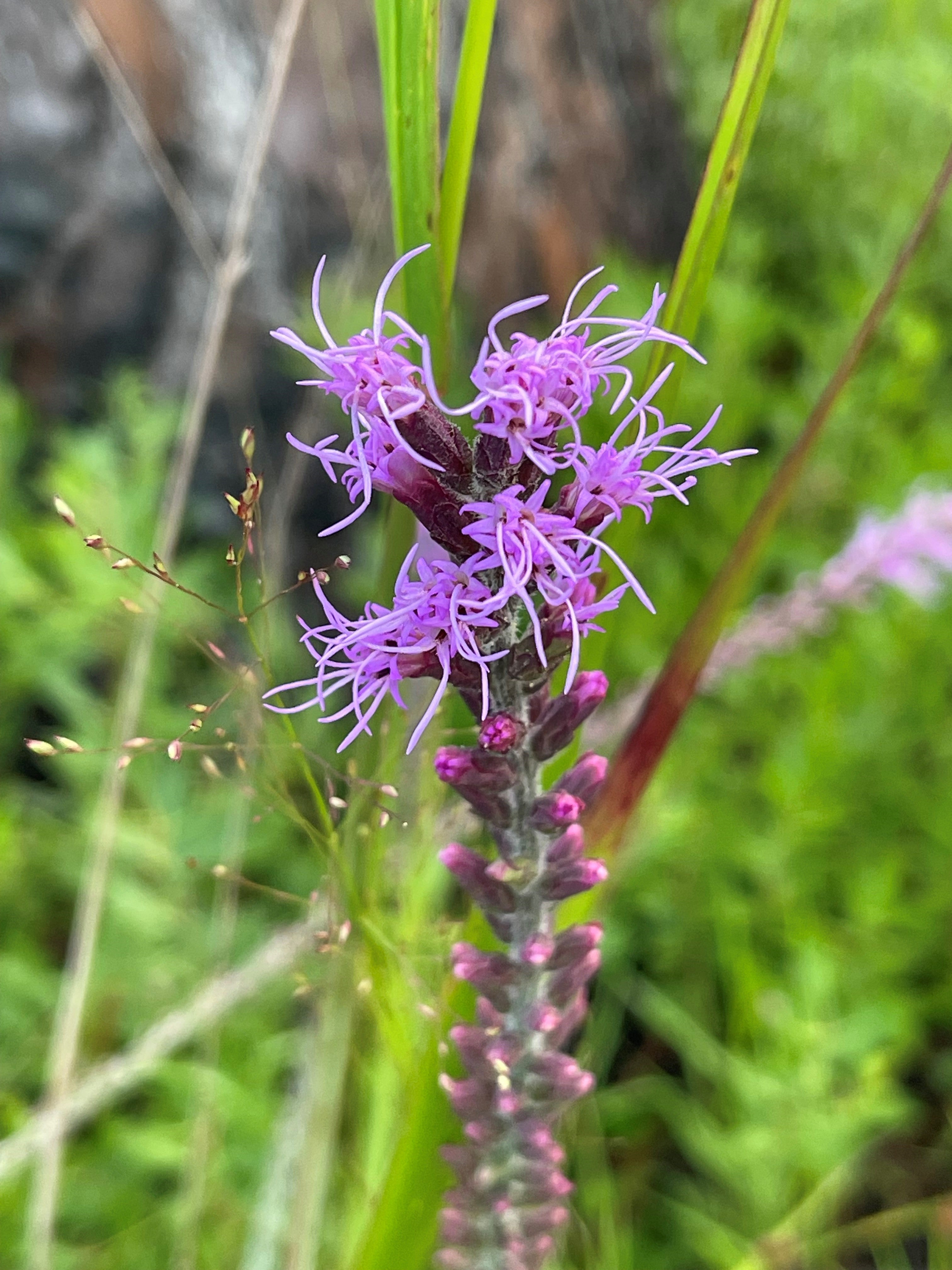An August field walk through the Crosby Arboretum’s educational exhibits
Published 8:09 am Sunday, August 28, 2022
By Pat Drackett
Director of the Crosby Arboretum and
assistant extension professor of landscape architecture with the Mississippi State University Extension Service.
This past Saturday, Dr. Wayne Morris, Professor of Biology at Troy University, led us on an information-packed field walk that began in our beech-magnolia habitat near the Arboretum Visitor Center. Dr. Morris discussed species seen in the various woodland plant communities along the pathways. We ended our journey in the south pitcher plant bog, which is currently a riot of late summer colors and textures.
We were joined by botany graduate student Amos Adams, who is currently working under Dr. Mac Alford at The University of Southern Mississippi. Amos contributed comments during the walk, so we truly had a “two for one” deal. Professor Alford has conducted well-attended botany walks at the Arboretum when he is not traveling to some exotic international destination to study other plant communities.
How wonderful it is to have these opportunities to walk the trails with these experienced and enthusiastic students of botany! These are the folks you can ask a “why” question of, knowing that you will receive an answer that can be trusted. I have a huge respect for persons who have chosen a field of academic study that involves time spent outdoors “in the field”. Here, they will be encountering spiders and snakes, deerflies and horseflies, yellow jackets, mosquitoes, chiggers, fire ants, ticks, extremes in weather, blisters, sunburn, and brambles, and this is only the beginning of some of the things an outdoor explorer must endure. Do you see that field botany is not a profession for the faint of heart? Field walks such as the recent jaunt led by Dr. Morris make it crystal clear that conditions which may at first seem to be annoying obstacles mean nothing to a person whose passion is the study of plants “in situ” (look this one up if you don’t recognize it) patiently awaiting discovery, examination and identification, and finally, exaltation.
In recent decades, there is an obvious trend for fewer numbers of students who elect to study botany (and entomology!) to not choose to spend time outdoors as a “field botanist”. Instead, they spend much of their time in a laboratory environment working with advanced equipment and techniques that allow for the study of plants on much closer, molecular level.
If you are the kind of person who enjoys pondering botanical nomenclature (organizing plants by Latin name), these last few decades have brought many changes in Latin names, ones that will cause people to make similar faces to those persons who have just heard chalk being pulled across a blackboard. Should you work in a botanical field, name changes are taken in stride, learned, and incorporated. But for the great majority of persons who don’t spend their entire day focused on plants, it can be a shock to learn that those sweet little lavender flowers that bloom along Ridge Road in the fall are no longer to be called “Asters”, but now have a new genus name – “Symphyotrichum”.
For current Latin names, we consult our plant database, linked from the orange rectangle at the bottom of our website home page. The database is hosted by the Lady Bird Johnson Wildflower Center, at The University of Texas at Austin, and is a great jumping off place for diving into the Wildflower Center’s larger native plant database for further study of other U.S. native species.
On our tour of the south pitcher plant bog, we caught sight of many late summer perennials and grasses, including a scarlet pine lily (Lilium catesbaei). Honeycomb head (Balduina), Candyroot (Polygala) with roots having a wintergreen fragrance, and the spikey silver-blue rattlesnake master (Eryngium) was mixed with the grasses along the pathway edge.
We are currently working on our fall schedule, planned for release the first week of September, and looking forward to BugFest (Friday and Saturday, October 7 and 8), an evening Open Mic on Saturday, October 15, the Fall Native Plant Sale on Friday and Saturday, October 21 and 22, and our Piney Woods Heritage Festival planned for Saturday, November 19.
Plan a walk to the Arboretum soon! Enjoy the fall blooms in our Savanna Exhibit and south pitcher plant bog, including a swaying sea of purple Liatris spikes to be followed by a variety of autumn grasses and late-season perennial flowers such as Swamp Sunflower. Both children and adults will enjoy feeding the fish and turtles from the Pinecote Pavilion. Leashed pets are always welcome. For more information, see our Facebook page or website calendar at http://crosbyarboretum.msstate.edu/ or sign up for email updates. Call the office at 601-799-2311 to register for classes to guarantee your space. The Crosby Arboretum is open from 9 a.m. to 4:30 p.m. Wednesday through Sunday and ocated at 370 Ridge Road in Picayune, at I-59 Exit 4.


